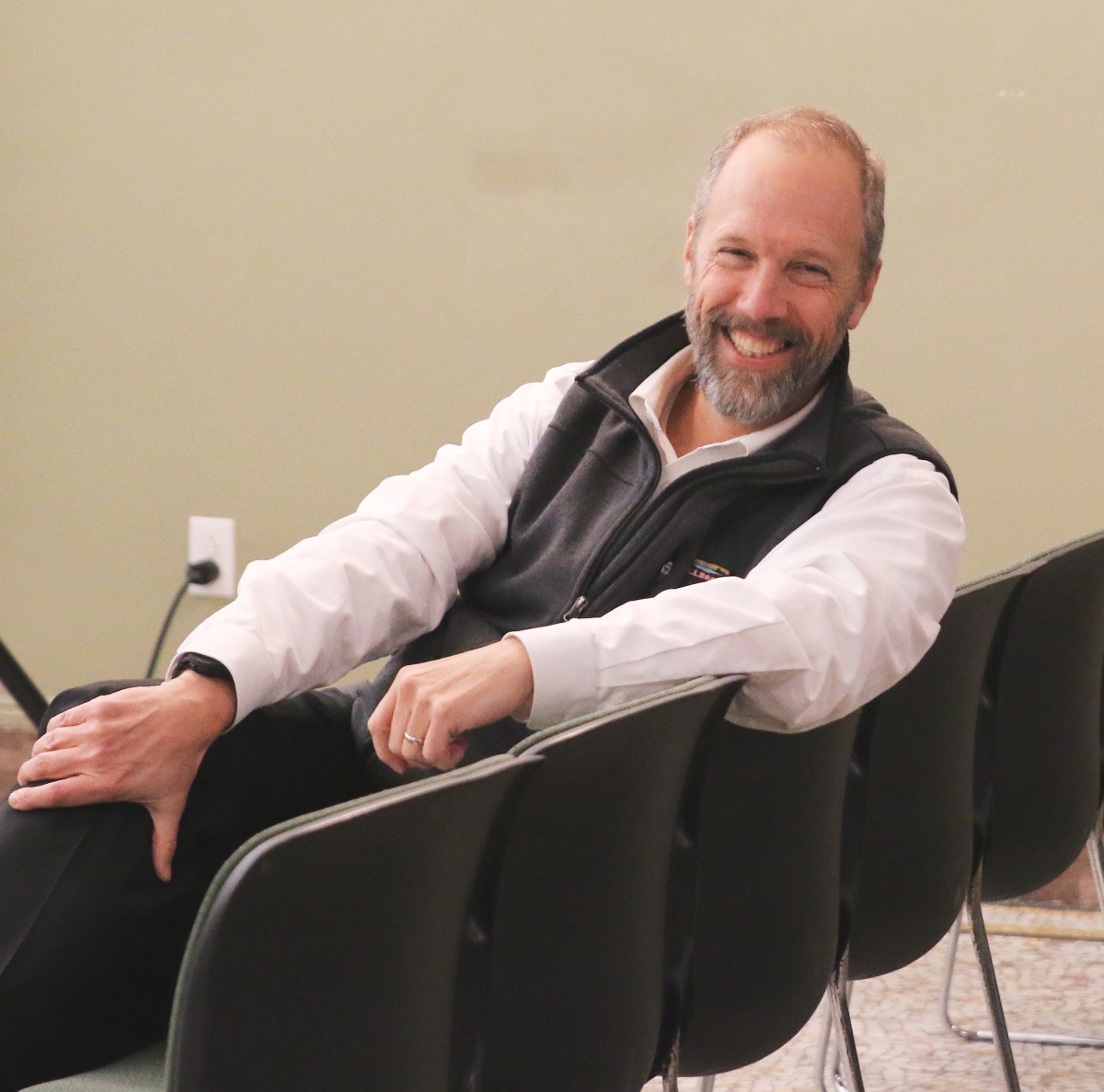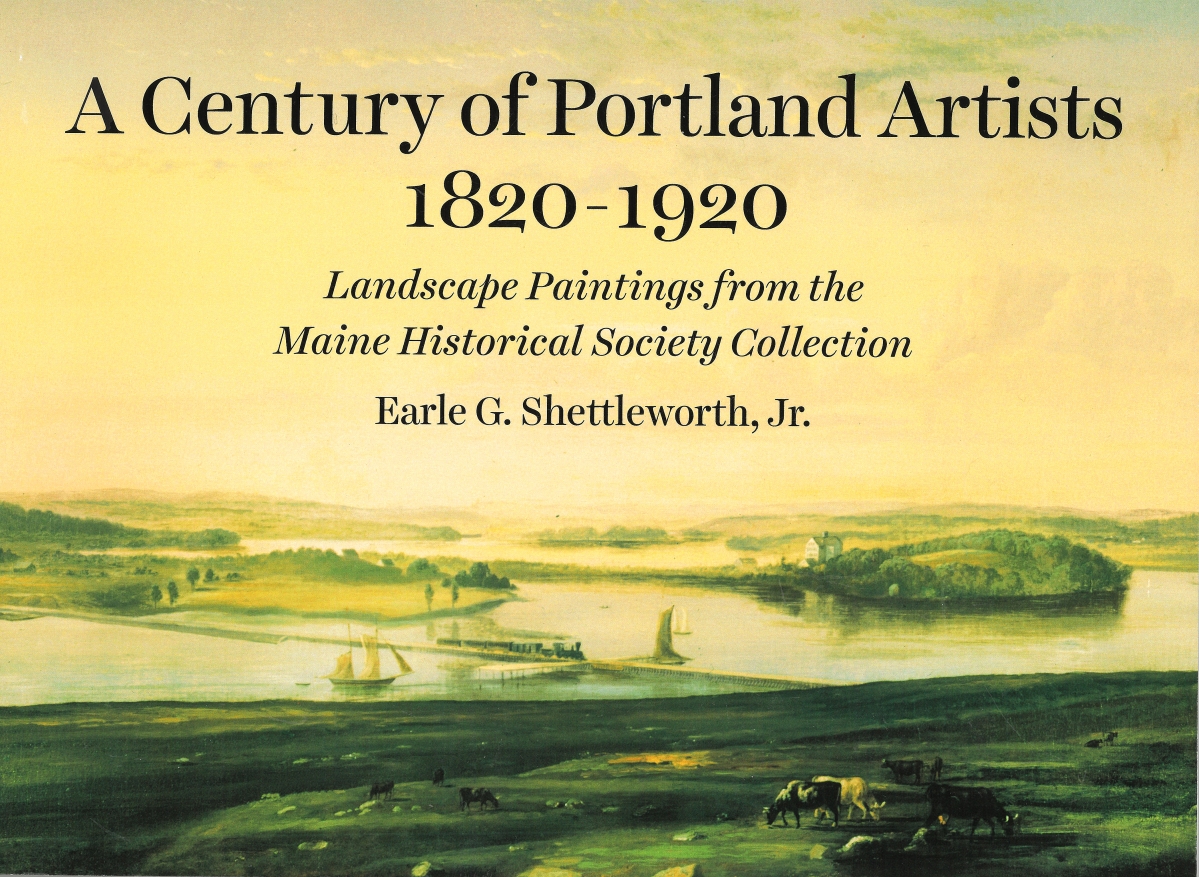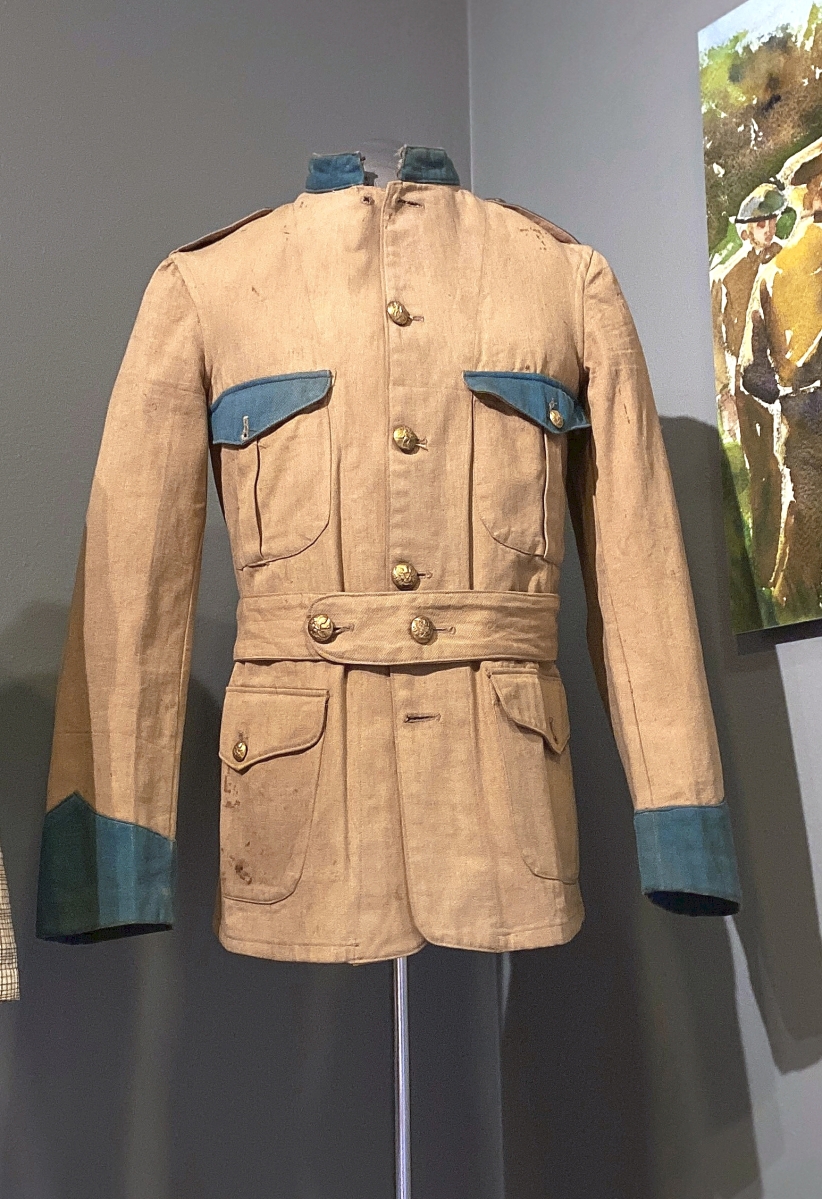It came to our attention that the Maine Historical Society (MHS) is the third oldest historical society in the United States but perhaps the least known, at least to people outside of Maine…and a committed and innovative resource for people who care about Maine. For our readers who are not intimately familiar with MHS, we reached out to the historical society’s executive director, Steve Bromage, who took time out to bring us up to speed on what is new and exciting these days at MHS, and what plans it has in the immediate future.
For our readers who are not intimately familiar with MHS, can you give us a brief introduction to its history and some of its core collections?
This is an exciting and significant moment in Maine Historical Society’s history. In 2022, we marked our 200th birthday. MHS was founded in 1822 – just two years after Maine became a state – and has been collecting, preserving and promoting research, scholarship and engagement with Maine history ever since. Our spring 2022 newsletter Circa includes a nice summary of MHS’s history. We are also serializing a history of MHS in the journal Maine History that goes deep into our story and early relationship with Bowdoin College.
Today our core program areas include the Brown Research Library, the Wadsworth-Longfellow House, the MHS Museum and the Maine Memory Network. We also partner with and provide archival, curatorial, storage and other services to individuals, institutions and businesses.
The Brown Research Library provides access to the most comprehensive collection of archival material related to Maine history, and serves researchers, scholars, educators, students, genealogists, the general public and professionals from many fields.
We have recently completed major collections initiatives related to our early Maine photography, Portland Press Herald Glass Plate Negative, clothing and architecture collections – each is available online. With funding from the National Endowment for the Humanities (NEH), we just completed digitization of our Proprietors and Northeast Boundary collections which document the settlement and distribution of land throughout Maine from the Seventeenth through Nineteenth Centuries. A massive undertaking, we digitized 35,000-plus records, many of which were transcribed by 2,000 volunteers worldwide.
MHS supports extensive scholarly and collections activities. We publish the scholarly journal Maine History in partnership with the History Department at the University of Maine, and regularly host fellowships and scholarly forums. We participate in the New England Regional Fellowship Consortium and are excited to launch a new fellowship to support research in business and economic history, named for business leader P.D. Merrill.
Our publishing program dates to the 1830s. We just published A Century of Portland Artists 1820-1920 – Landscape Paintings from the Maine Historical Society Collection by Earle G. Shettleworth Jr. We are very excited to be presenting Earle with MHS’s 2023 Maine History Maker this May in Portland.
The MHS Museum offers changing exhibitions and public programs that use Maine history to provide context for topics of contemporary interest and concern. Recent initiatives explored immigration, veterans’ issues, Maine’s food heritage and economy and Maine’s evolving paper industry. Our Maine Bicentennial exhibition, “Holding Up the Sky: Wabanaki People, Culture, History & Art” explored 13,000 years of Wabanaki presence in Maine and was developed with eight Wabanaki co-curators. Our 2021 exhibition – “Begin Again: Reckoning with Intolerance in Maine” – explored how Maine fits into the national dialog on race and equity.
Last year’s exhibition, “Northern Threads: Two centuries of dress at Maine Historical Society” highlighted our significant clothing collection, now fully cataloged, digitized and available online. This year’s exhibition, “Code Red: Climate, Justice & Natural History Collections” explores the importance of the environment to Maine’s identity and way of life, and how climate change may affect that.
Each includes an exhibition, digital resources, extensive public programs delivered via Zoom, and educational resources that support remote learning. All are available online.
How long have you been with the Maine Historical Society?
I have been at MHS for almost 22 years, executive director for the last 10. During my first decade here, I focused on the development of Maine Memory Network, public and education programs, and served as associate director. The experience of working closely with communities throughout the state on Maine Memory had a profound impact on me, and shaped my outlook on history, what it can mean to people, and on MHS’s role in Maine. It brings everyone into the story, illustrates how profoundly Maine today is shaped by history, and demonstrates how essential each part of the state is to Maine’s identity and well-being. Since becoming executive director in 2012, my focus has been on building MHS into a modern, forward-looking institution that can be a key resource and point of connection for people who care about Maine. I am incredibly proud of our team and the work they do.
How have its collection(s) come to fruition?
Through serendipity, luck and the generosity of donors! Collecting here has evolved constantly, reflecting the interests of our leaders, times and opportunity.
Initially, we focused on documenting the founding of Maine. We began collecting photographs in the 1850s when the medium was new. In the 1910s, we collected material related to World War I. In the 1990s, we took on the Central Maine Power collection which documents the electrification of Maine. Recently, MHS acquired a “Covid Quilt” as we document the historic moment we are living through now.
In 2010 MHS led a remarkable consortium of 16 Maine museums, historical organizations and their supporters to keep 17 linen banners created by the Maine Charitable Mechanics Banners in 1841 in Maine.
We have benefited greatly, too, from the generosity of major collectors like E. Christopher Livesay and Earle G. Shettleworth Jr who have spent decades meticulously building collections since given to MHS. A recent bequest from Christopher P. Monkhouse, one of America’s foremost decorative arts curators, has enabled us to acquire important Maine objects for the collection.
The development of our offsite collections center with Portland Public Library has been a game-changer. The facility, supported by a 112kw solar array, provides 18,000 square feet of climate-controlled space to care for, manage and store our collections. It has become critical to everything we do. We wouldn’t have been able to acquire the Bangor Theological Seminary collection or undertake the collections initiatives I mentioned without it. We have just launched a $500,000 fundraising challenge to complete a $2 million initiative that will significantly expand its physical and our financial capacity.
What are some of the interesting / unique / surprising pieces in the
collection? Any fun stories to go along with them?
Oh, our collecting adventures! In 2018, collector-extraordinaire Chris Livesay, MHS deputy director Jamie Rice and I worked with naturalist Bernd Heinrich to acquire his beautiful watercolors of bird species. That included visiting the remote, off-the-grid Maine homestead where Bernd has done much of his research and writing. We four-wheeled it up his mountain, carefully retrieved flat files, and made it back down with wonderful “treasure.” Chris and I were in heaven; Jamie is more of a city-person but willing to do whatever it takes for the collections!
Dr John S.H. Fogg left his 5,000-plus autograph collection to MHS in 1896, including signatures for every signer of the Declaration of Independence. It wasn’t until the 1990s that we discovered that there was an original Dunlap broadside within the collection during an in-depth processing project.
Are there things you’ve got on a
wish list, for want of a better word?
We are currently fundraising to purchase two military uniforms associated with the Fernald family of Winterport. One was worn by Albert Fernald, a member of the Twentieth Maine during the Civil War; the second worn by his son who served in Cuba with the Seventh Infantry during the Spanish-American War. There are wonderful Maine stories related to both. We also have our eyes out for the iconic Moses Greenleaf 1820 map of Maine. We have an incredible collection of his maps but not THAT one.
We are creating a Collecting Plan that will guide future development of the collections. We want folks at our Tricentennial to look back at this moment with awe and appreciation for our stewardship and investment in MHS collections.
Inspired by Maine’s MHS’s bicentennial in 2022, the MHS is considering ways to transform its Portland campus. What can you tell our
readers about that?
We are in the planning phase. Our goal is to develop our campus into the premiere place to discover, explore and connect to Maine. We’re considering several possibilities, one of which includes replacing our museum building with a new facility that would contain a permanent exhibition, changing galleries and wonderful public spaces. There would be expanded space to display and feature MHS collections, and to highlight the voices, stories and collections of partners across Maine. We are working to provide audiences with a seamless digital and in-person connection to Maine.
To get us there, we have developed a new 2022-2027 Business Plan that lays the foundation for MHS’s third century of service to Maine. It outlines critical paths and key initiatives that will guide our efforts to transform MHS from a small but mighty organization that consistently fights above its weight to one that has the capacity and resources to inspire and be a source of connection for all people who care about Maine. We have just launched a new website and brand and developed an Audience Engagement Plan to guide our work. It is an exciting time with lots going on!
What can you share about the Maine Memory Network?
The Maine Memory Network remains one of the most innovative online history platforms in the country. MHS provides infrastructure, training and support that empowers communities throughout Maine to share their collections and stories online. Maine Memory has evolved constantly since its launch in 2001, and now includes historical items contributed by 285 partners across Maine; hundreds of digital exhibits; educational resources; My Maine Stories – a portal that enables individuals to share their stories; and Maine History Online, a sprawling introduction to Maine. The model gives status to local knowledge and expertise, and radically expands the perspectives that are included in Maine history. It also provides deep access to many of MHS’s most important collections. New material is added constantly. I encourage readers to explore! It remains the centerpiece of our digital strategy, and we are currently planning its next phase of development.
The society owns the Wadsworth-Longfellow House. Why is this house significant to MHS and has it had any updates, new exhibitions
recently? Or are there plans afoot for it in upcoming months and years?
The Wadsworth-Longfellow House (1785-86), a National Historic Landmark, is one of Maine’s most significant historic structures and remains central to the MHS experience. Built following the American Revolution, the house was the childhood home of beloved poet Henry Wadsworth Longfellow. The Longfellows included writers, architects, artists and politicians who helped shape Maine and American culture. One of the exciting possibilities of the museum planning process is the opportunity to reconfigure a new building and refocus our campus on the house, which is overwhelmed by the current museum building. We regularly host pop-up exhibits in the house – we displayed Longfellow family clothing during “Northern Threads.”
[Editor’s note: The Maine Historical Society is at 489 Congress Street, Portland. For information, www.mainehistory.org or 207-774-1822.]
-Madelia Hickman Ring
Steve Bromage at the Maine Historical Society 200th birthday party,
photo courtesy Maine Historical Society.
Cover of Earle G. Shettleworth Jr’s A Century of Portland Artists 1820-1920:
Landscape Paintings From The Maine Historical Society Collection,
Maine Historical Society, 2021. Photo courtesy Maine Historical Society.
The recently acquired “23 Warblers of Maine”
by Bernd Heinrich, 2006, watercolor.
Photo courtesy Maine Historical Society.
MHS is currently fundraising to purchase two military uniforms and other important artifacts associated with the Fernald family of Winterport. One was worn by Albert Fernald, a Medal of Honor recipient of the famous Twentieth Maine during the Civil War; the second (shown here),
a circa 1898 field tunic, was worn by his son Roy who served in Cuba with the Seventh Infantry during the Spanish-American War. Photo courtesy Maine Historical Society.





